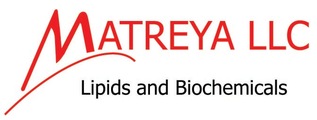服务热线
021-60498804
产品中心
/ Products Classification 点击展开+
| Cat. Number | 1301 |
| Chemical Name | 1301 90989-93-8 磷脂酰乙醇胺,(植物) Phosphatidylethanolamine, (plant) |
| CAS Number | 90989-93-8 |
| Mol. Formula | C41H74NO8P |
| Mol. Weight | 740 |
| Qty 1 |
1ml |
| Qty 2 | 50mg/ml |
| Appearance | liquid |
| Application Notes | 98+%,TLC |
| Synonym | 磷脂酰乙醇胺,(植物) Phosphatidylethanolamine, (plant),PE |
| Solubility | chloroform |
| Storage condition | -20℃ |
| References | Application Notes: Like most phospholipids PE usually has a saturated fatty acid on C-1 and an unsaturated fatty acid on C-2 of the glycerol backbone but the fatty acid distribution at the C-1 and C-2 positions of glycerol within all phospholipids is continually changing, owing to phospholipid degradation and the continuous phospholipid remodeling that occurs while these molecules are in membranes. PEs are neutral zwitterions at physiological pH. PE is frequently the main lipid component of microbial membranes and the second most abundant phospholipid in mammals, comprising as much as 45% of brain lipids. They are concentrated in mitochondria and are key building blocks of membrane bilayers where they are distributed asymmetrically with the majority confined to the inner leaflet. It appears that a primary role for PE, in bacterial membranes at least, is simply to dilute the high negative charge density of the anionic phospholipids. PE acts as a chaperone in transport membrane folding.1 In animals PE is involved in the secretion of very-low-density lipoproteins and aids in membrane fusion and fission.2 In plants lyso PE retards senescence by inhibiting phospholipase D. PE is the precursor to many important lipids, acts as a protein transport from the membrane to the vacuole, and is synthesized through the CDP-ethanolamine or the PS decarboxylation pathway. After being converted to diacyl glycerol PE acts as a second messenger.3
References: |





